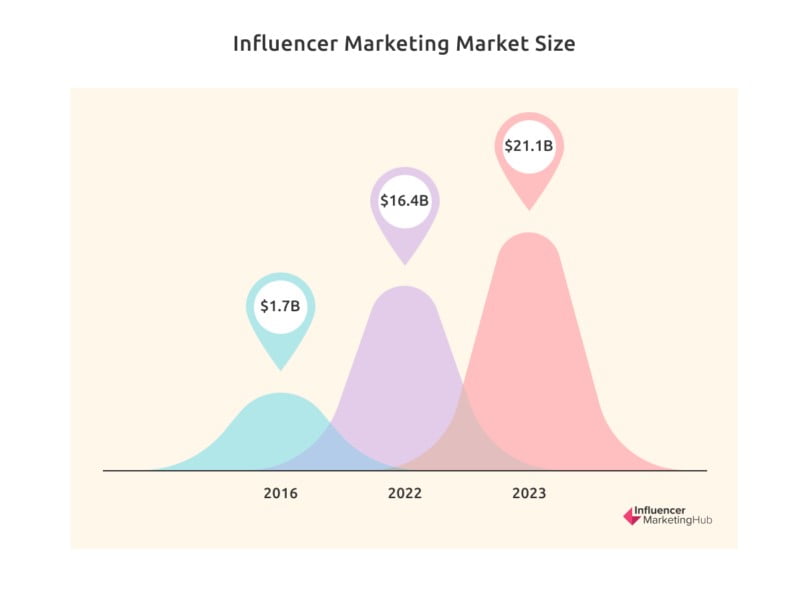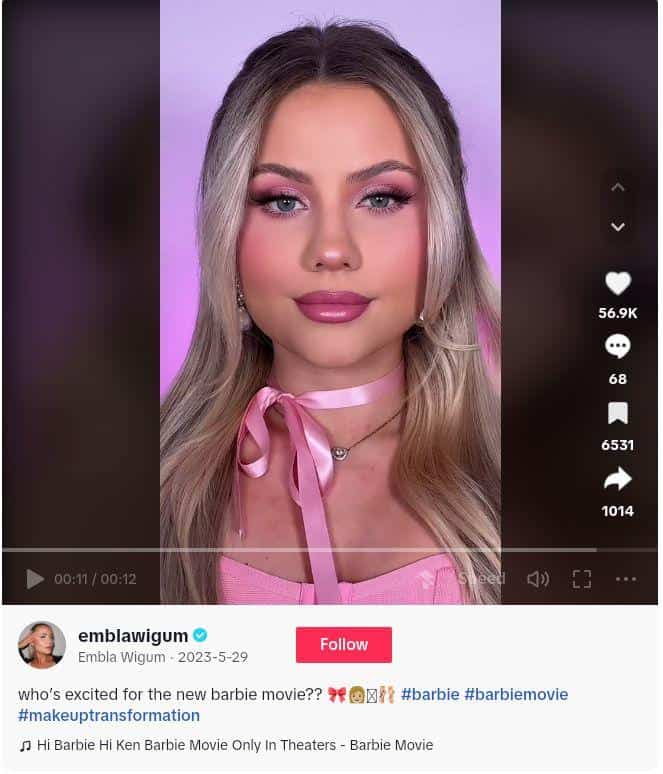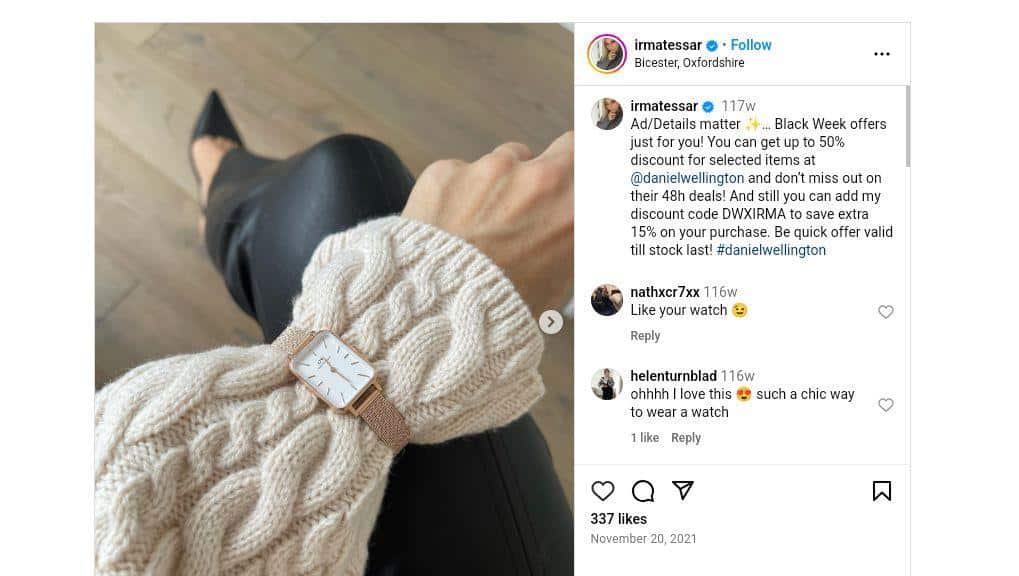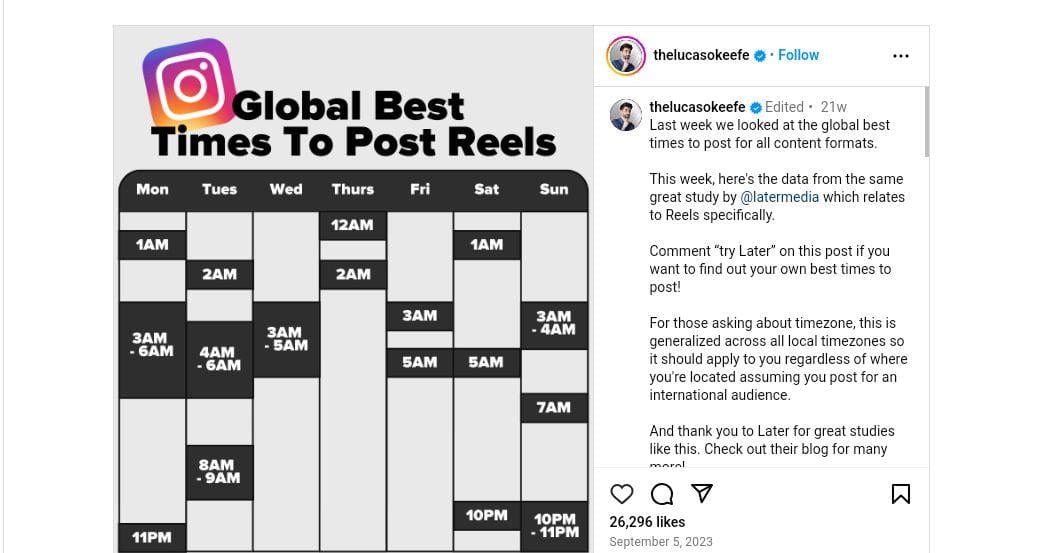Influencer marketing is fast becoming a major marketing strategy for business growth. In fact, this industry’s market size grew to $21.1 billion by the end of 2023.

Image via Influencer Marketing Hub
Currently, one in four social media users purchase products based on the recommendations of influencers.
This trend is likely to continue, so you need to start evaluating influencer partnerships for your brand. You should also focus on specific metrics that provide actionable insights.
In this post, I’ll discuss 10 key influencer marketing metrics for measuring campaign performance in 2024.
Top 10 Influencer Marketing Metrics for 2024
Are you ready to pin down the most essential influencer marketing metrics? Here are the top metrics to start tracking in 2024.
1. Engagement Rate
Generally known as likes, comments, mentions, saves, and shares, engagement rate tells you how much your audience resonates with your content.
Engaged consumers are more likely to become paying customers. According to Statista, 58% of US consumers bought a product after seeing it on social media.
Monitoring an influencer’s engagement rate offers insight into how well the partnership is driving your target audience to interact with your brand. For instance, before “Barbie” premiered, some influencers posted a picture of themselves using a Barbie template.
Soon, the internet was flooded with social media videos of people dressed in Barbie attire, using hashtags like #Barbiethemovie. A popular TikTok make-up artist, Embla Wigum, even shared a Barbie-themed make-up tutorial, showing support for the movie.

Image via TikTok
Barbie grossed over $1 billion at the Box Office through various marketing strategies, including influencer marketing. This campaign strategy didn’t just boost audience engagement; it also resulted in high revenue.
An easy way to calculate this type of influencer marketing metrics is to get the sum of interactions (likes, comments, shares). Divide it by the influencer’s total number of followers, then multiply by 100.
A good influencer engagement rate is between 1% – 5%. The figures can be higher depending on the social media platform and the influencer’s following.
2. Reach and Impressions
An influencer’s reach refers to the number of unique people who see their posts. On the other hand, impressions measure the number of times a post was seen. This includes multiple views from an individual.
You can measure these influencer marketing metrics in different ways, depending on the social network. Facebook calculates reach in three ways:
- Unique views on your paid ad
- People who saw your post through their News Feed
- People who saw your post because their friends interacted with it through liking, commenting, or sharing
Although platforms like Twitter and LinkedIn don’t measure reach, they offer some insight into impressions. LinkedIn allows you to see the top demographics of unique viewers.

Image via LinkedIn
This data can help you understand where your social media content is making the most impact. It also enables you to tailor campaigns for specific geographic locations.
Since one person can view your post multiple times, your post impressions may exceed the reach. Dig deeper into such content to know why people are sticking around it.
High reach and impressions indicate that your content is being exposed to a wider audience. Not only do these influencer marketing metrics increase brand visibility but they also send a signal to potential customers that they can trust your product.
3. Conversion Rate
This is one of the most important influencer marketing metrics because it determines your campaign’s return on investment (ROI). You want value for your money, so your influencer partnerships need to convince people to take a particular action.
What counts as conversion depends on the goals of your influencer marketing campaign. It can include the following:
- Product sales
- Using a unique discount code at checkout
- Newsletter signups
- Ebook downloads
You can measure the conversion rate by tracking the number of purchases or signups directly attributed to the influencer’s content.
In the example below, Daniel Wellington, a Swedish watch brand, offers promo codes to its influencers. Since these codes are merged with the influencer’s name, it’s easy to track conversions.

Image via Instagram
4. Follower Growth
Besides engaging existing followers, successful influencer marketing should add new followers to your account. It’s a sign that people are interested in your offer.
For instance, Later Media grew its following by partnering with Lucas O’Keefe, a marketing expert.

Image via Instagram
A growing follower count means that your influencer has a large audience that can be influenced. It also means that their content may go viral, offering you organic visibility beyond the influencer’s network.
However, follower growth is one of the influencer marketing metrics you should measure carefully. Some influencers buy followers, leaving you with you a handful of fake followers. Here are some telltale signs:
- Repetitive engagements or likes on all your posts
- A large number of followers in one day
- Irrelevant or spammy comments
5. Click-Through Rate (CTR)
The CTR is a measure of how many times people click on a link in one post. It’s one of the critical influencer marketing metrics that determine the effectiveness of an influencer’s call to action (CTA).
When an influencer makes a post and attaches your website link, the aim is to direct traffic to your website.
So, if people saw the post but didn’t click the link, it might be that they’re not interested in your offer. It could also mean that the CTA wasn’t clear or compelling enough.
CTR enables you to discover how many people found your post on social media and wanted to know more. A high CTR indicates active engagement beyond social media, leading to potential conversions.
To calculate the click-through rate, divide the sum of clicks on a post’s link by the sum of impressions. Multiply the result by 100.
6. Brand Mentions
Some of the most visible influencer marketing metrics are brand mentions. They track how frequently influencers and their followers talk about your brand on social networks. These mentions can be tagged (e.g. @Coke) or untagged (e.g. “Coke” or “Coca-Cola”).
An increase in brand mentions indicates that the influencer is actively incorporating your brand into their content. When this is done naturally, your target audience may perceive it as an authentic endorsement. As a result, the influencer’s followers will trust your brand.
If your brand mentions increase during or after an influencer campaign, it implies that followers are genuinely engaging with your content. They might even create user-generated content, further expanding your reach.
7. Social Traffic
If your campaign goal is lead generation, website traffic from social platforms should be among your key influencer marketing metrics. That’s because you want users to visit your website, learn about your products or services, and become potential leads.
This type of influencer analytics is also helpful for increasing brand visibility and driving sales. It helps you discover the different features of your campaign that resonate with your audience. This could be the CTA or campaign messaging.
As a result, you’ll be able to optimize your efforts for better results. You can track social traffic using these methods:
- Create custom Urchin Tracking Module (UTM) parameters for the links your influencers will share on social media. This will help you track the campaign, influencer, and social platform associated with each link.
- Integrate Google Analytics into your website. Monitor the traffic acquisition section to see which platforms are driving traffic. Apart from this, you can also embed Google Reviews on website for better engagement.
- Use in-built social media analytics tools, such as Instagram Insights and LinkedIn Analytics.
Here’s how Maria Vizuete, a fashion blogger, uses trackable links to advertise outfits.

Image via Instagram
8. Brand Sentiment
Checking the positive and negative sentiments of potential customers toward your brand is among the influencer marketing metrics to track in 2024. It involves evaluating the attitude and emotional tone expressed in social media posts, comments, reviews, and other user-generated content.
By monitoring sentiments, you can find out whether your influencers are passing the right message to their followers. Also, you’ll know whether their followers are responding positively to the messages created on your behalf.
This tweet about Airbnb is an example of a negative brand sentiment.

Image via X
If you detect more negative sentiments, it’s an indication of potential issues. You should address them in good time before they escalate into a crisis. You can use sentiment analysis tools or social listening tools to measure brand sentiment.
9. Cost Per Acquisition (CPA)
CPA is the amount of money spent on acquiring a new customer through an influencer marketing campaign. It’s among the important influencer marketing metrics that inform you of the profitability and efficiency of your marketing efforts.
For instance, if your CPA is high, it could mean that your campaign isn’t generating enough leads to justify your investment. You can then optimize it or look for influencers who are more cost-effective.
To calculate CPA, divide the total campaign cost by the number of conversions or new customers. The result will help you set the right pricing model for rewarding influencers.
According to the Attrock guide, it gets into more details about successful influencer marketing pricing, so you can spend more on influencers who generate higher conversions.
10. Return on Investment (ROI)
If you want to know whether your influencer campaign was successful, check the ROI. It compares the costs incurred against the gains from your campaign.
These costs include all expenses associated with planning, implementing, and measuring your campaign’s effectiveness. They include:
- Influencer fees
- Amount spent on boosting posts or running targeted ads
- Giveaways
- Overhead costs
- Social media analytics tools
Your campaign’s ROI offers insight into what worked and what didn’t.
For instance, if the campaign generated a high ROI, you can identify the success factors and replicate them in future campaigns. But if the ROI is low, you’ll adjust your strategies for an optimized performance.
More importantly, the return on investment is one of the top influencer marketing metrics that resonate with stakeholders and executives. So, if you can ensure a positive social media ROI, you’ve got a strong case for continued investment.
ROI is calculated as the net profit from the campaign divided by the total cost of the campaign and multiplied by 100.
Final Thoughts on Influencer Marketing Campaigns
You can get more value from your influencer collaborations by measuring campaign performance. There are lots of metrics to analyze, but I’ve covered the most relevant ones in 2024.
Although social media algorithms change, tracking key influencer marketing metrics and setting clear goals for your campaign ensures you stay ahead of the curve. This way, you identify your gains, costs, and ultimately, the ROI.

